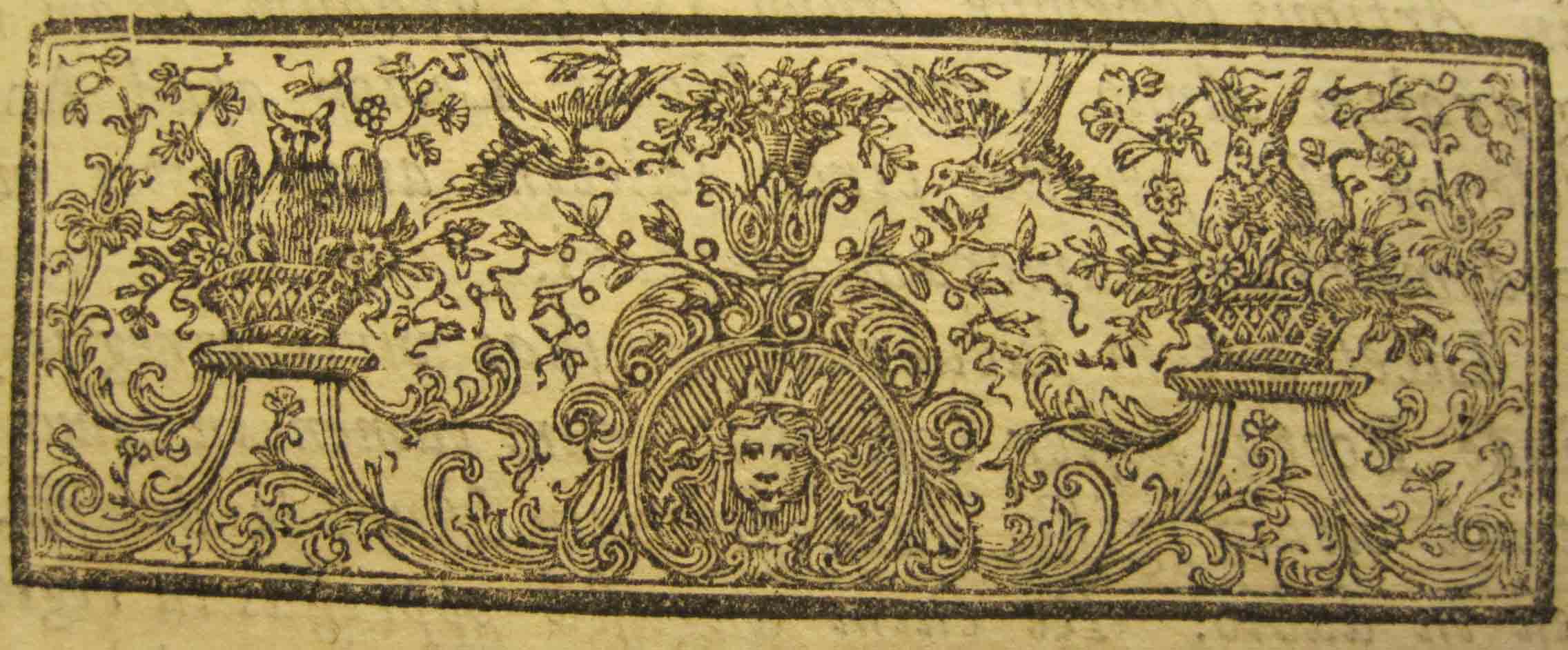Last Valentine’s Day, Americans spent a staggering $52.2 million on flowers. Why is it that we’re willing to pay so much for a commodity that, when in season, could be grown in our own backyards? The high demand for flowers on Valentine’s Day and the price we’ll pay for a bouquet can’t be the sole result of modern marketing, for the “red, red rose” was an emblem of romance long before De Beers managed to make the diamond ring a nearly universal symbol.
Look to the written record, and you’ll find that we have long been fascinated with flowers. From earliest herbals with their root-to-petal illustrations to nineteenth-century guides to the language of flowers, flowering plants have played starring roles in a wide range of genres. They have been viewed as scientific specimens, served as the subject of poetry, and as been prescribed as medicine. Curious about the many ways that flowers have been written about and valued in the past (and spurred on by February’s floral craze), I decided to learn more by taking a look at how flowers were featured in three very different works in SLU’s collection: a 1739 gardener’s manual, a 1750 educational tract, and an 1839 meditation on flower gardens.
The English Gardener’s Manual: Eighteenth-Century Flower Cultivation

Richard Bradley’s New Improvements of Planting and Gardening, Both Philosophical and Practical, published in 1739, was intended as a guide for gardeners who wished to design and plant their own elaborate pleasure gardens. Bradley, a Fellow of the Royal Society, wrote in a straightforward style tailored to tradesman rather than scientists, referring to plants by their common English names and focusing on how to cultivate them and where to plant them so that they looked to best advantage. He is most enthusiastic about “durable” (110) plants, and he praises the sunflower not only for its cheerful appearance — though its flowers, “resembling so many Stars, are very delightful” (108) — but also for the hardiness that enables it to “grow in the Shade of almost any Soil” and makes it “even capable of resisting the Smoke of London, where it is often cultivated in pots” (108).

Besides giving readers a glimpse of the 18th-century English landscape (and thus of the plants most valued by those wealthy enough to own land and privileged enough to be able to relegate some to ornamental plants), Bradley’s observations give insight into flowers’ practical uses (such as whether they are edible or if they can be used to make dye) and how they are “cultured” (then a synonym for “cultivated”). Occasionally, Bradley even brings science into the mix. A section about carnations includes a jargon-free explanation of how hybrid varieties are created, enabling even the most inexperienced horticulturalist to grasp the science underpinning multi-colored blooms.

While Bradley’s assessment of each flower is of practical use to planters, he is not above making subjective judgments on a specimen’s appearance. The tulip, for example, “wants nothing… but a grateful Scent to make it the finest Flower in the World” (143), and all plants ought to be “planted in Places proportionable to their several Altitudes” so as to avoid the “intolerable Mistakes… of planting Dwarfs in the midst of a Border, and some of the most Gigantick Kinds of Flowers for Edgings” (106). Bradley even occasionally veers into folklore. His discussion of how the passion tree got its name (from Spanish friars who associated the fruit with Christ’s passion) is objective and historical, but his description of monkshood is more a mix of myth and hearsay. Bradley writes that the plant’s flowers are:
…so poisonous, that I have heard, the Eating only six or seven of the Blossoms in a Sallet, has kill’d a Gentleman in France… It is said, that where they grow wild, no Cattle will touch them; and that the Sort of Insect natural to this Plant, is an Antidote against the Biting of all venomous Creatures. (118)
Here he echoes John Gerard, who, in his sixteenth-century Herball, wrote of monkshood, “the grasse that groweth round it [is] eaten up with cattell, but no part of the herbe it selfe [is] touched” and the flies that feed on the plant can be used to make an antidote “against the deadly bite of the spider called Tarantala, or any other venomous beast” (Gerard 972). Such passages undercut Bradley’s otherwise no-nonsense approach to flower cultivation, making it clear that folklore and symbolism have long been entangled with even the most purportedly practical studies of the plants that grace our tables.
The Eighteenth-Century Textbook: Flowers as Cultural (and Culinary) Star

A completely different approach to flora (which we might expect to be more scientific than Bradley’s, but is actually less so) can be found in Noël Antoine Pluche’s Spectacle de la Nature: Or, Nature Display’d, an eighteenth-century “textbook” designed to teach children about the natural world. This French work in translation covers topics from insects to the earth’s layers, and is organized into dialogues among archetypal characters from the educated estates: a prior, a countess and a chevalier. Two dialogues focus on plants. The first is mainly philosophical, and the characters discuss the evidence of God’s design in the beauty and perfection of flowers. The second is a crash course in Parterre Design 101: what to plant and where to plant it within an elaborately laid out garden. Much of this second dialogue follows the formula of an old herbal, covering each plant’s history, uses, appearance, and cultivation, and the author both quotes Richard Bradley (as a foreign visitor with good advice on planting chives) and presents diagrams of on-trend garden layouts similar to those drafted by Bradley in New Improvements of Planting and Gardening.

What makes this work stand out is its open acknowledgement of the cultural importance of flowers. Pluche celebrates flowers as “Symbols, or Representations of Joy” and “Ornaments of Feasts” with the power to “enliven the Festival that begins to languish” (15). In Pluche’s opinion, no country festival would be complete without floral garlands, and no matter how beautiful a bride’s attire, there would still be something wanting if she went without “a Sprig of Flowers” (15).
Pluche also cites a number of practical uses for flowers, stating that:
Their Services are not limited to the Sight, and Smell, and other Senses may derive advantages from their Ministration. They supply us with Pastes to enrich our Desserts, and present us with Powders to perfume our Wardrobes; they afford us delicate Syrups, and even Remedies to relieve us when we are indisposed. Violets, Jonquils and Peach-Blossoms, Roses, Jessamines, Carnations, and especially Orange Flowers, accommodate us with Conserves, and a Variety of Confections; together with Essences and distilled Waters, that continue to us the Enjoyment of the Odours and other useful Qualities of Flower, when they have long ceased to be in Season. (22)
Culinary flavorings, remedies, and preserves – here’s a variety of uses for flowers that are now more niche than commonplace. Today, edible flowers are novel (my mother’s tendency to adorn salads with “exotic” ingredients like violets, dianthus, and nasturtiums plucked fresh from the garden certainly drew many of my brother’s high school friends to the table), and only specialty and international foods stores can be reliably counted on to stock items like rosewater. Yet Pluche’s text serves as a reminder that, in eighteenth-century Europe, flowers had a plethora of cultural connotations. A flower like the rose might have conjured up associations not only with the opulence of the wealthy’s pleasure gardens, but with the abandon of country festivals, and with the rose waters, syrups, and rose hip preserves that came to Europe via the Middle East, but became very much a part of the national cuisine in countries such as England, Spain, and France.
Nineteenth-Century Meditation: Flowers as Symbols
In 1836, Anglican clergyman James Hervey took a decidedly less practical approach to flowers than either Bradley or Pluche in his Reflections on a Flower Garden. Hervey’s discussion of flowers is limited solely to their symbolism, which he uses as a focus for Christian meditation. His writing is reverent; like Pluche, Hervey sees flowers as evidence of God’s perfect design, as well as God’s particular gift to mankind (for no other animal admires flowers as they ought to be admired). While I personally find Hervey’s book to be a bit of a slog (let’s just say that his language is flowery in more ways than one), I do find it interesting that the language of flowers, popularized in the nineteenth century, appears to have influenced the way that he writes about certain plants. The violet, for example, was said to represent modesty, and this trait shines through in Hervey’s description of the plant as an “expressive emblem, of those modest virtues which delight to bloom in obscurity” (102). Just as folklore seeps into Bradley’s practical manual and the cultural importance of flowers is prominent in Pluche’s textbook, popular symbolism finds its way into Hervey’s serious meditation.

Beyond the text itself, the crowning jewel of Reflections on a Flower Garden is its eleven full-page plates. While Bradley’s and Pluche’s volumes were illustrated with black and white engravings, the images in Hervey’s book are in full color. Flowers described in detail by all three authors come alive with vibrant leaves and deep-hued, velvety petals.
* * *
Have I discovered the secret to the rose’s allure or puzzled out why we’re willing to pay so much for a Valentine’s Day bouquet? Not even close. Yet these three books, representing a mere crumb of European writings on flowers through the centuries, make it clear that each blossom common to our table has a long and complex history of uses and connotations. When you buy that bouquet of roses for your Valentine, you’re paying for much more than petals and stems — each flower also bears its weight in traditions old and new.

 by
by 





